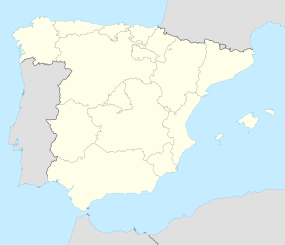Clunia

|
|
| Alternate name | Colonia Clunia Sulpicia |
|---|---|
| Location | Peñalba de Castro, Province of Burgos, Castile and León, Spain |
| Coordinates | 41°46′50″N 03°22′14″W / 41.78056°N 3.37056°WCoordinates: 41°46′50″N 03°22′14″W / 41.78056°N 3.37056°W |
| Type | Settlement |
| Site notes | |
| Website | Spain.info |
Clunia (full name Colonia Clunia Sulpicia) was an ancient Roman city. Its remains are located on Alto de Castro, at more than 1000 metres above sea level, between the villages of Peñalba de Castro and Coruña del Conde, 2 km away from the latter, in the province of Burgos in Spain. It was one of the most important Roman cities of the northern half of Hispania and, from the 1st century BC, served as the capital of a conventus iuridici in the province Hispania Tarraconensis, called Conventus Cluniensis. It was located on the road that led from Caesaraugusta (Zaragoza) to Asturica Augusta (Astorga). The city declined during the 3rd century and was largely abandoned by the Visigothic era.Clunia is a toponym of Arevacian origin.
The city of Clunia was founded on a mount a short distance from a Celtiberian settlement called Cluniaco, or Kolounioukou, belonging to the Arevaci, a Pre-Roman tribe that belonged to the family of Celtiberians.
Clunia was built from scratch. Unlike other sites conquered by the Romans, Clunia did not occupy the site of an earlier city or town. Clunia boasted two public baths, a basilica, a forum, many taverns and shops,a theater, and a large temple dedicated to Jupiter.
From Livy, we know that the site was besieged by Pompey in his fight against Sertorius in 75 BC; Pompey was forced to leave Clunia partly due to weather conditions there. After resistance by Sertorius, Pompey finally destroyed what existed of Clunia in 72 BC. Clunia fell under the control of the Vacceos in 56 BC, but subsequently fell again under Roman control, as did the rebelling Vacceos and Arevaci.
...
Wikipedia

